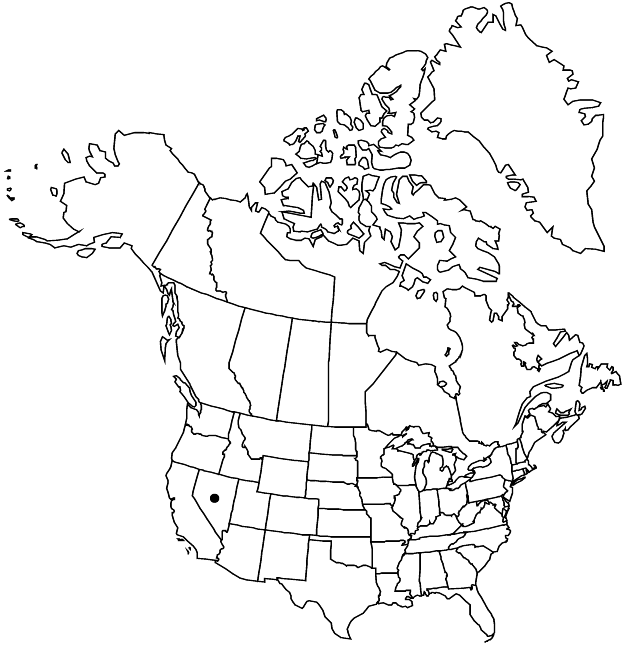Eriogonum umbellatum var. vernum
Great Basin Naturalist 28: 157. 1968.
Shrubs, dome-shaped, 3–6 (–9) × 3–9 (–13) dm. Aerial flowering-stems erect, 0.5–1.5 dm, floccose or glabrous, without one or more leaflike bracts ca. midlength. Leaves in rather open rosettes; blade elliptic, 0.5–2.5 × 0.3–1 cm, thinly floccose abaxially, less so to thinly floccose or glabrous and green adaxially, with some blades glabrous on both surfaces, margins plane. Inflorescences umbellate; branches 3–8 cm, mostly glabrous, without a whorl of bracts ca. midlength; involucral tubes 1.5–2.5 mm, lobes 2–3 mm. Flowers (5–) 6–9 (–10) mm; perianth pale to bright-yellow.
Phenology: Flowering May–Jul.
Habitat: Sandy to gravelly, often volcanic flats and slopes, saltbush and sagebrush communities
Elevation: 1400-2000(-2200) m
Discussion
Variety vernum is known from several scattered populations in northern Nye County. It flowers mainly in May and early June, with some fruit-bearing flowers persisting into early July. Flower color can vary from bright to pale yellow in a single population. The taxon clearly is related to var. nevadense, which in central Nevada occurs at higher elevations (mainly in pinyon-juniper communities). The shrubs certainly are worthy of cultivation.
Selected References
None.
Lower Taxa
"dm" is not declared as a valid unit of measurement for this property."dm" is not declared as a valid unit of measurement for this property."dm" is not declared as a valid unit of measurement for this property."dm" is not declared as a valid unit of measurement for this property.
